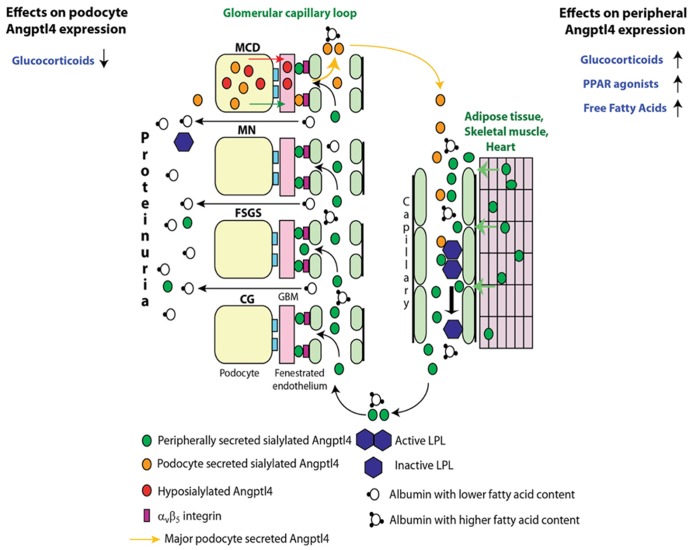FIGURE 2.
Pathobiology of Angptl4 in nephrotic syndrome. In minimal change disease (MCD), podocytes secrete a hyposialylated form that remains restricted to the kidney and induces proteinuria, and a sialylated form that enters the circulation. Treatment with glucocorticoids reduces podocyte Angptl4 upregulation. In all forms of primary glomerular disease like membranous nephropathy (MN), focal and segmental glomerulosclerosis (FSGS), non-HIV collapsing glomerulopathy (CG), and MCD, peripheral organs (mostly skeletal muscle, heart and adipose tissue) secrete the circulating, sialylated form of Angptl4. Treatment with glucocorticoids, PPAR agonists and free fatty acids increase peripheral organ Angptl4 secretion. Circulating Angptl4 binds to glomerular endothelial αvβ5 integrin to reduce proteinuria, or inactivates endothelium bound lipoprotein lipase (LPL) in skeletal muscle, heart and adipose tissue to reduce hydrolysis of plasma triglycerides to free fatty acids (FFAs), resulting in hypertriglyceridemia. Some Angptl4 and LPL are lost in the urine. Adapted from Clement et al. (2014).

